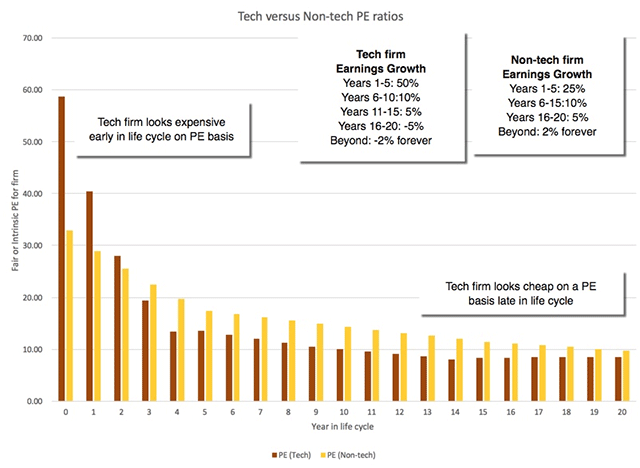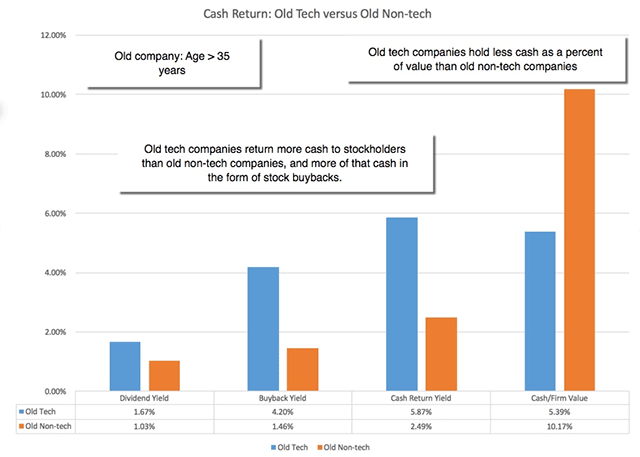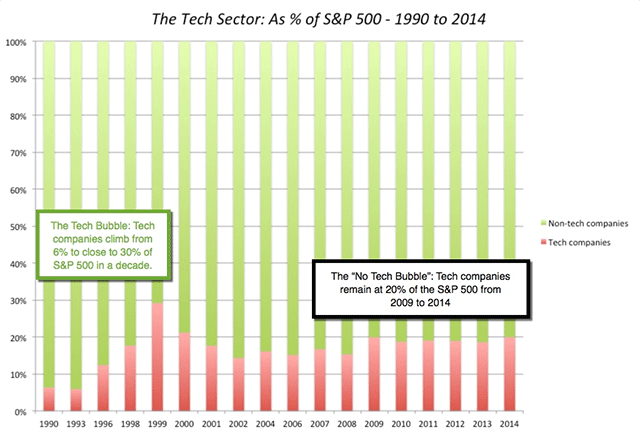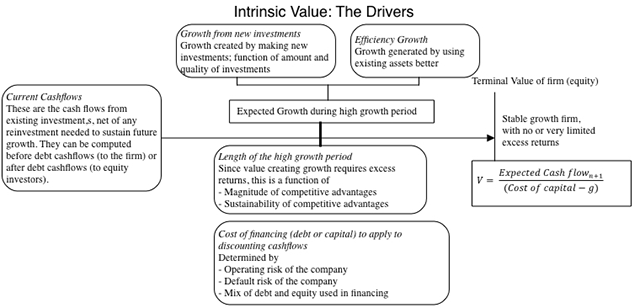Much of what we learn and practice as investors represent models and methods developed in a different age, one where the market was composed of consumer product, infrastructure and manufacturing companies. While those lessons may have been good ones for old economy markets, I will argue in this post that they can provide misleading signals with short corporate life-cycles, an affliction common among, but not unique to, tech companies. Lest this be construed as an attack on a specific group of investors, I will spread my critique across investor classes, starting with value investors, then moving on to growth investors and market timers and then turning it on intrinsic valuation practitioners (which is where I count myself).
The Tech Challenge for Value Investors
If you are a value investor, you may have been told that everything you need to know about valuation is in Ben Graham's Security Analysis. I will make a confession. I love Ben Graham for his philosophy and intellect, but I think that using the techniques suggested in it to value tech companies is akin to using a hammer to do surgery. It is not Graham's fault, since he wrote the book at a time when the corporate world was populated with railroads, utilities and manufacturing companies and much of his advice was directed at coaxing investors who were more interested in buying bonds, to consider stocks as an alternative. In fact, in the Graham world, a good stock looks like a perpetual bond, with ever-growing coupons. So, at the risk of arousing the ire of value purists, here is my list of old value investing chestnuts that need to be roasted on the tech fire.
1. Don't trust earnings multiples: There are some pricing metrics that are singularly inappropriate for use with tech companies, and at the top of the list is price earnings (PE) ratios. Early in the life cycle, when growth is explosively high and R&D expenses are rising, the PE ratios for tech companies will be high, as markets price in future earnings, and tech companies will almost always look expensive, even if they are fairly priced. Later in the life cycle, when growth is not just low but often negative and R&D expenses are falling, the PE ratios for tech companies will be low, and tech companies will look cheap, even when they are not.
To illustrate this dynamic, I created two companies, both with 20-year windows and similar risk, but made one a tech company, with intense growth (50%) for the first 5 years, a short mature period of 5 years (10%) and speedy decline thereafter and the other one a non-tech company, with less intense growth (25%) for the first 5 years, a longer mature period of 10 years and a more stable afterlife. The graph below shows the fair PE ratios for these firms, as they move through their lifetimes. The bottom line is that tech companies look expensive on a PE ratio, when they are young, and cheap on a PE ratio basis, when they age, even if they are fairly valued. This problem is exacerbated by the accounting mistreatment of R&D, which makes young tech companies look less profitable than they truly are and old tech companies more profitable. Multiples of revenues and book value are also affected, but not to the same degree.

I can offer some evidence for this proposition from my post on the aging of tech companies, where I classified all companies based on their age and compare old tech companies (older than 35 years) with old non-tech companies. In the graph below, I compare the earnings multiples at which old tech companies(>35 years) trade, relative to old non-tech companies:

Note that old tech companies look cheap on every earnings metric, relative to old non-tech companies. There may be a reason why companies like IBM and Microsoft keep showing up on the lists of cheapest stocks, when you run value screens.
2. Don't buy and hold "good" companies: Not all value investors subscribe to this notion, but quite a few seem to accept the idea that if you find a good company (well managed, with strong competitive advantages), you should buy the company for your portfolio and hold for the long term (perhaps forever). That is not good advice with tech companies, where today's tech superstar can become tomorrow's dog. If you buy a tech company, you should be revaluing it at frequent intervals, selling it, if the price exceeds the value significantly.
3. Don't prize dividends over stock buybacks: I have always believed that fixed dividends are a ill-suited way of returning cash on a residual claim (equity), especially because investors who receive them seem to view them as constants that should not be changed. With technology companies, I would argue that stock buybacks are not only more suited to their life cycle needs, but are also more reflective of what they can afford to pay out, than large dividends. Again, I can offer partial backing for this statement by comparing cash returned by old tech companies versus old non-tech companies.

Old tech companies have, at least in the aggregate, returned far more cash to stockholders than old non-tech companies, have used buybacks more frequently and have held on to less cash wishing the companies, behavior that you would expect in the aggregate in the speeded up life cycle hypothesis, where decline is more precipitous.
The Tech Challenge for Growth Investors
While growth investors don't have the long traditions that value investors do, they have their own share of dos and don'ts accumulated through time. One is, of course, the idea of buying growth at a reasonable price (GARP), a notion made popular by Peter Lynch's work at Magellan and his resultant writings. In putting that common sense notion into practice with tech companies, growth investors draw on they own share of practices based on the premises that growth is good, that it is sustainable and if bought at a reasonable price, is a winning strategy.
1. Growth is not always good: I have long argued against the lazy notion that growth is good and that a company should therefore go for growth, at any cost. While that notion is dangerous at any company, it is particularly so at tech companies, where once the life cycle turns, growth is a value destroyer, not a value adder.
2. Growth may not be sustainable: Growth in the past has never been a great indicator of future growth across companies, but it is a particularly misplaced notion with tech companies where growth rates can change over night.
3. PEG Ratios are misleading: If value investors put their trust in PE ratios, growth investors put their in PEG ratios, the ratio of PE to growth rate. A low PEG ratio is considered to be a signal that a company is under valued; this is dumbed down even more when a PEG ratio below one becomes a magical indicator of cheapness. Using the tech life cycle rubric, I would argue that the PEG ratio approach will lead to too many tech companies looking cheap during their high growth phase and too few in their decline, the mirror image of the problem faced by value investors. Here again, I can use the two companies from my example to illustrate my point:

Note that early in the life cycle, tech companies have lower PEG ratios than non-tech companies and later in the life cycle, they look expensive.
The Tech Challenge for Market Timers
This is not a post on market timing, but there are lessons here for market timers as well. The composition of the S&P 500 has changed over time, with tech companies increasing as a proportion of the index from 6% of the index in 1990 to 20% of the index in 2015.

While only the most successful of tech companies make it into the index, they do bring their specific life cycle characteristics with them. The effect on the index PE will depend in large part on where these companies are in their life cycles; if they are still in their growth phases, their presence will push up the index PE, but if they are in decline, they can depress the index PE.
The Tech Challenge in Valuation
As someone who lives in the intrinsic value world, I wrestle with this compressed life cycle concept, when I value technology companies. The typical framework for valuing a company, in a discounted cash flow valuation, is to estimate cash flows for a growth phase and then to estimate a terminal value, based on growth forever beyond that point.

The defense that is offered, when someone notes that nothing lasts forever, is that if a company lasts decades, you might as well use the assumption of "forever", since your value will be approximately the same number. That argument loses its power with technology firms, raising the question of whether we are over valuing mature technology companies by using this standard mythology. There are three simple fixes, if the perpetual growth assumption troubles you with a technology company:
1. Use a liquidation value, assuming that you disband the company and sell its assets. Since the assets of technology companies are not physical, this will yield a conservative estimate of value.
2. Use a growing annuity equation, i.e., assume that your cash flows will continue after your terminal year but only for a finite period (10-15 years) and with limited growth.
3. Use a growing perpetuity equation, with a negative growth rate in perpetuity, a practice that you don't see used often, but is well in line with what the model allows. Intuitively, you are assuming that the company will shrink over time and effectively disappear.
As a final point, in intrinsic value, you have to make judgments about managers in companies, and when valuing declining tech companies, where managers are in denial about the decline, you have to value the consequences (bad investments, value destroying growth etc.).
The Bottom Line
As the market's axis tilts towards technology, it may be time for us to revisit the metrics and models that we have been using, almost on auto pilot, for many decades. The shorter lives and the higher failure rates of technology companies can make them look cheap, when they are expensive, if you are a value investor, and their high growth rates can draw in growth investors, who may not factor in the fact that this growth is not sustainable.
This article first appeared in Aswath Damodaran’s blog.
(Aswath Damodaran is a professor of finance at the Stern School of Business at NYU.)